Kew Gardens | Treetop Walkways and Victorian Glasshouses
People line up around the block for Kew Gardens.
Why, you ask? Because it’s a sprawling botanical garden that’s home to the biggest and most varied collection of plant life in the world. It’s over 500 acres in size (that’s over four times the size of Vatican City), and even has its own police force. The sheer scale of the place means it’s not just one of the top London attractions everyone needs to tick off; it’s also a UNESCO World Heritage Site.
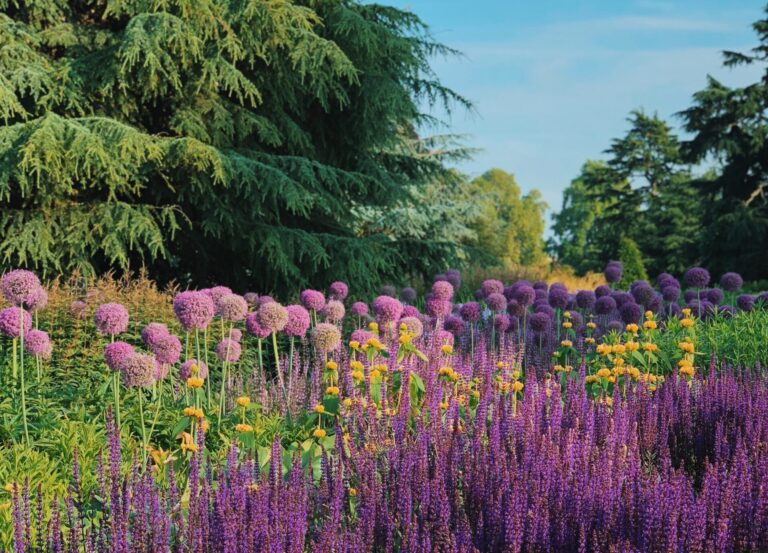
Shane Zhong/Unsplash
Its origins can be traced back to the 1760s, but Kew Gardens was officially founded in 1840 as a living museum of plant life from around the world, and today carries out all kinds of vital conservation work, including building a growing seed library of extinct and endangered plants with the hope of one day reviving them.
It’s also just a really beautiful place to spend the day.
A short walk from Kew Gardens tube station (down in South-West London), there is an entrance fee to pay – but once you’re here you can easily spend a couple of hours exploring the grounds. Here’s what you’ll find there:
–
THE SHIRLEY SHERWOOD GALLERY
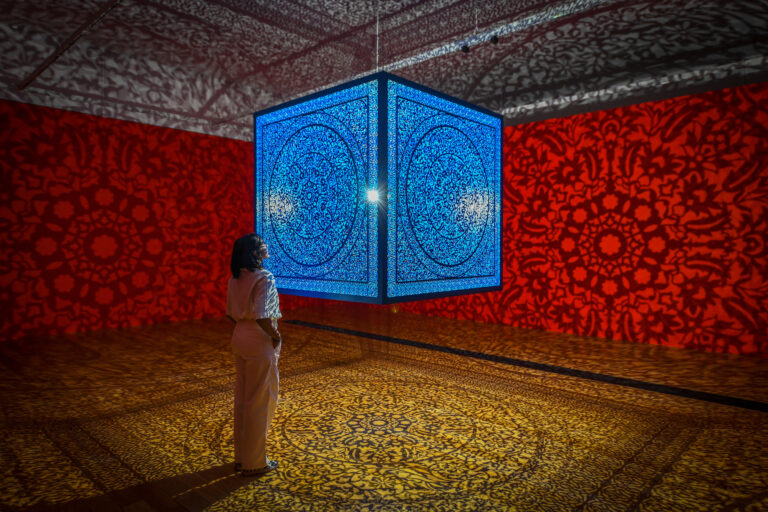
Sitting on the eastern edge of Kew Gardens, the Shirley Sherwood Gallery is currently home to a pretty inventive and striking pair of artworks from Pakistani-American artist Anila Quayyum Agha. They take the form of a pair of elaborately decorated cubes (or should we say Kewbes?) whose shadows paint the walls around them with intricate patterns. Coupled with these is an exhibition of 25 botanical drawings by artist Sue Wickison, who travelled around the Middle East sketching plants referenced in the Qur’an.
–
THE GLASSHOUSES AT KEW
Perhaps the most iconic landmarks in Kew Gardens are the vast Victorian glasshouses. They’re strangely magical places, built from hand-blown glass and soaring wrought-iron frames, designed to house plants brought back from warmer climes. Kept at a balmy 18-28°C, they were originally heated by coal (that brick tower by the entrance? That’s essentially a fancy Victorian chimney).

Viola Favoretto/Unsplash
The Victorian Temperate House is the largest, home to over 10,000 plants, from over 1.5k different species. Those plants are among the world’s rarest – with a couple even bought back from the verge of extinction by the horticulturalists at Kew – and hail from the Mediterranean, Africa, Australia, New Zealand, South and Central America, and Asia. In fact, the only landmass not represented is Antarctica… which makes sense given that this is, essentially, a giant greenhouse.
More modern is the Princess of Wales Conservatory, a glass labyrinth housing desert plants and cacti as well as Kew’s annual Orchid Festival, which fills the building with an abundance of beautiful floral displays every February.
–
THE TREETOP WALKWAY
The 200m long Treetop Walkway offers a way to view Kew’s trees, plants and greenhouses… 18m above the ground. Here you can get some incredible views, and a sense of how massive the gardens really are. Don’t panic when you feel it swaying in the wind, it’s all part of the design apparently…
–
THE PAGODA
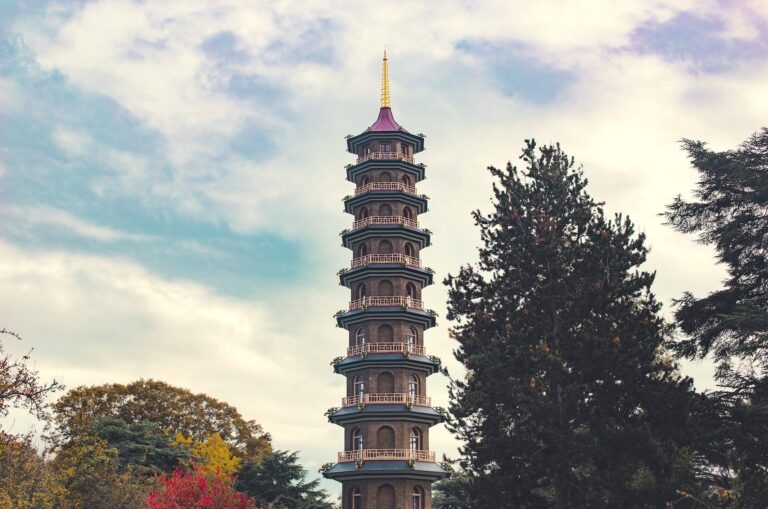
Acool Rocket/Unsplash
Standing dramatically at the end of a tree-lined avenue, this 50m tall tower was – obviously – inspired by Chinese pagodas, and was built in 1762. It’s possible to climb the spiral staircase inside, but at ten storeys you might prefer to admire its 80 gilded dragons from ground level.
–
THE JAPANESE GARDEN
A short walk away from the pagoda is the less vertigo-inducing, but just as impressive, Japanese Garden. Aside from sporting an array of native trees and plants including cherry blossoms and rhododendrons, the garden is also home to a scale replica of a gate from a temple in Kyoto; a peaceful gravel zen garden; and carefully arranged boulders and stone lanterns designed to reflect the movement of nature.
–
THE HIVE
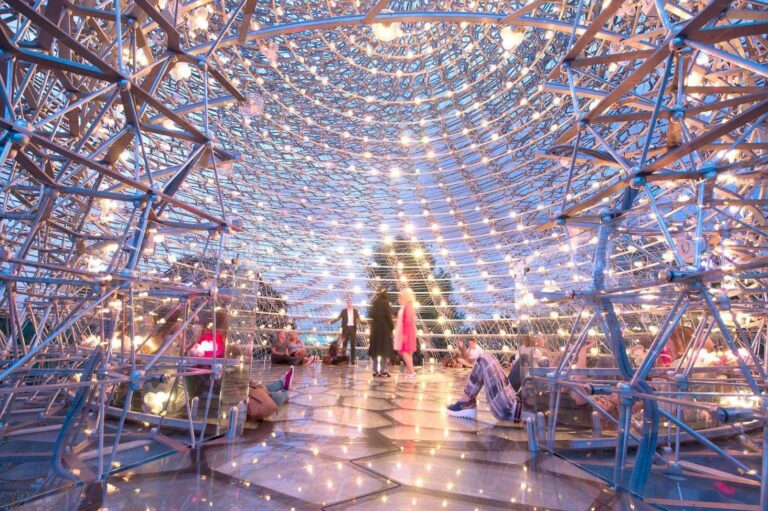
Yes, Kew Gardens has a gigantic, walk-in beehive; a hollow, aluminium lattice whose interior is rigged with a thousand LEDs, all of which are hooked up to a real beehive behind the scenes. Inside that beehive, they’ve placed micro accelerometers which read the activity of the bees themselves, converting their vibrational movement into lighting effects, and allowing the interior of The Hive to become a real time visual representation of the bee colony’s activity. There’s also a meditative, deep, ambient soundscape that “hums” in real time along with the bees. It’s written & performed in the key of C, because that’s the key bees apparently buzz in (no, it’s not B. Way to mess that one up, nature).
Sadly you’ll find no actual honey inside The Hive – unless you bring your own along, which would be weird. You will, however, find some very sweet ”Hive Explainers” who’ll be keen to tell you anything you want to know about our little pollen-happy friends.
–
OTHER STUFF
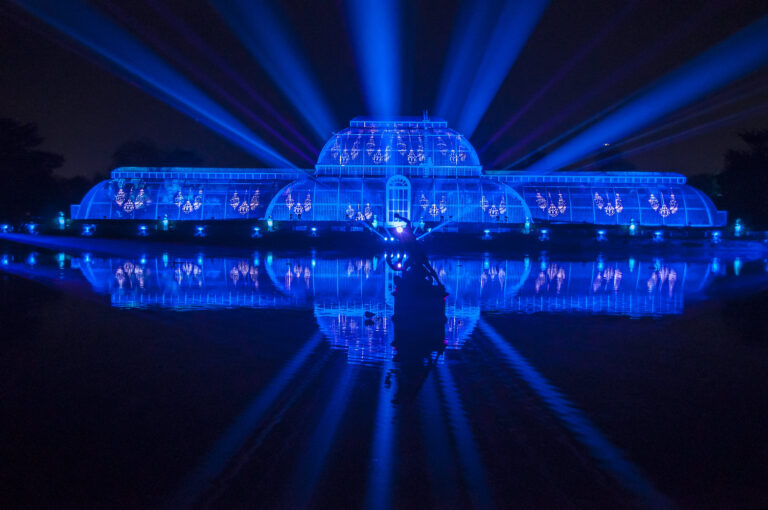
of other days/Flickr
Of course, Kew Gardens’ biggest selling point is the sheer amount of greenery and plant life on display. There are stretches of vivid green lawns (amazingly, picnics are allowed); stunning flower beds that spring into life throughout the year; an ‘arboretum’ made up of 14,000 trees; a lake spanned by a sinuous wooden bridge; occasional art installations like Pip & Pop’s colourful fantasy landscapes; and the annual Christmas at Kew lights trail, which brings the gardens to life after dark with dazzling illuminations. And that’s before you even get to Kew’s varied events programme, which includes a whole calendar of workshops, live gigs, outdoor film screenings, lates, and talks by horticulturalists, beekeepers and scientists…
…plus the occasional Kew & A.
NOTE: Kew Gardens are open daily. Tickets cost £13.50-£24 – you can find out more, and book ahead HERE.
Kew Gardens | Kew, Richmond, TW9 3AE
Like exploring the city’s green spaces? Check out our guide to London’s best secret gardens
